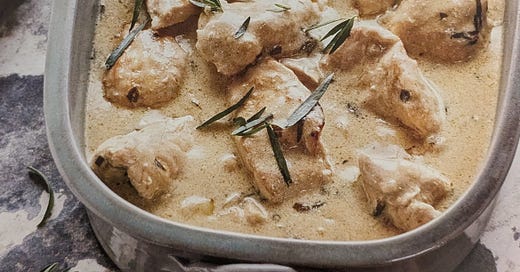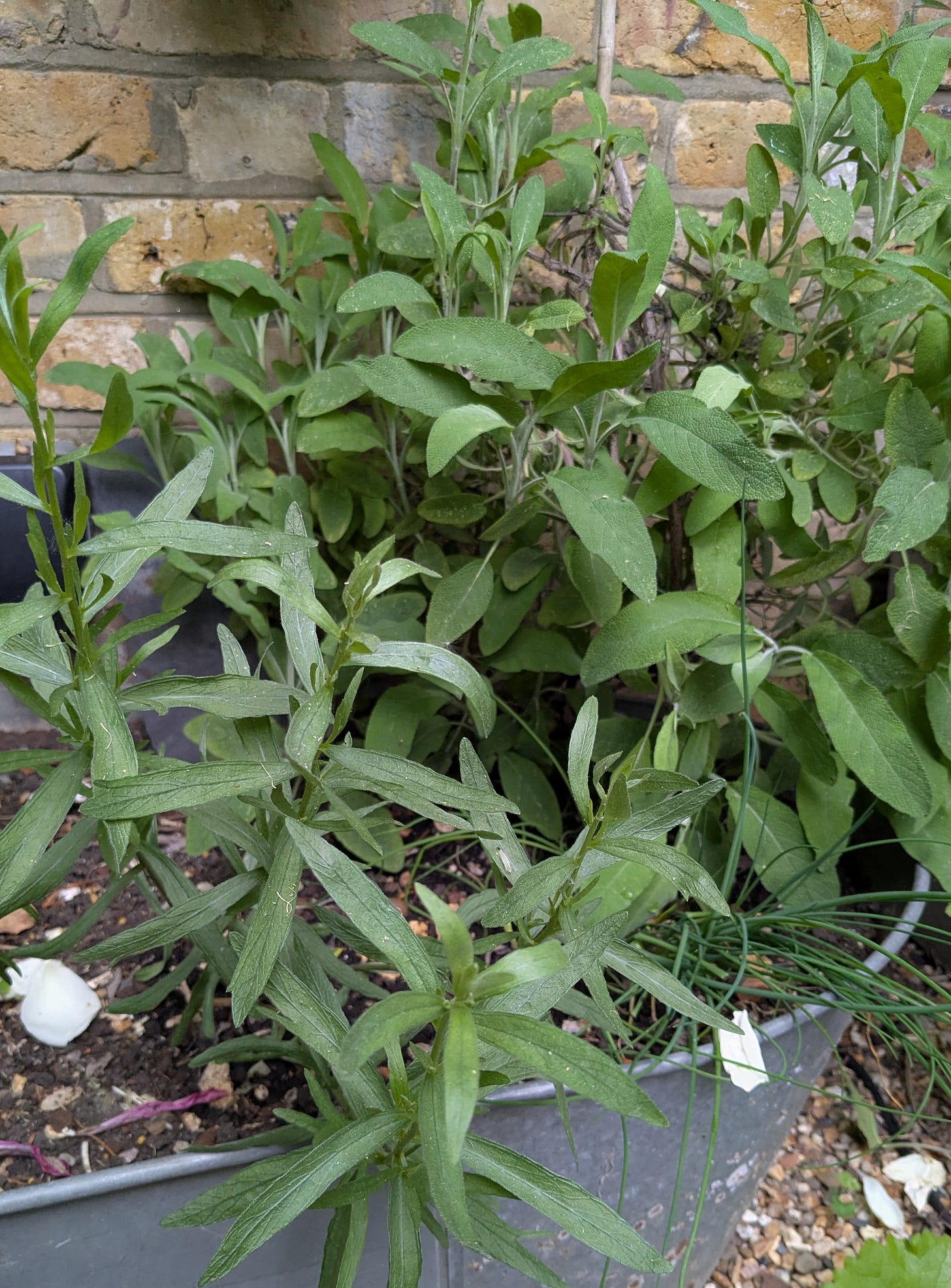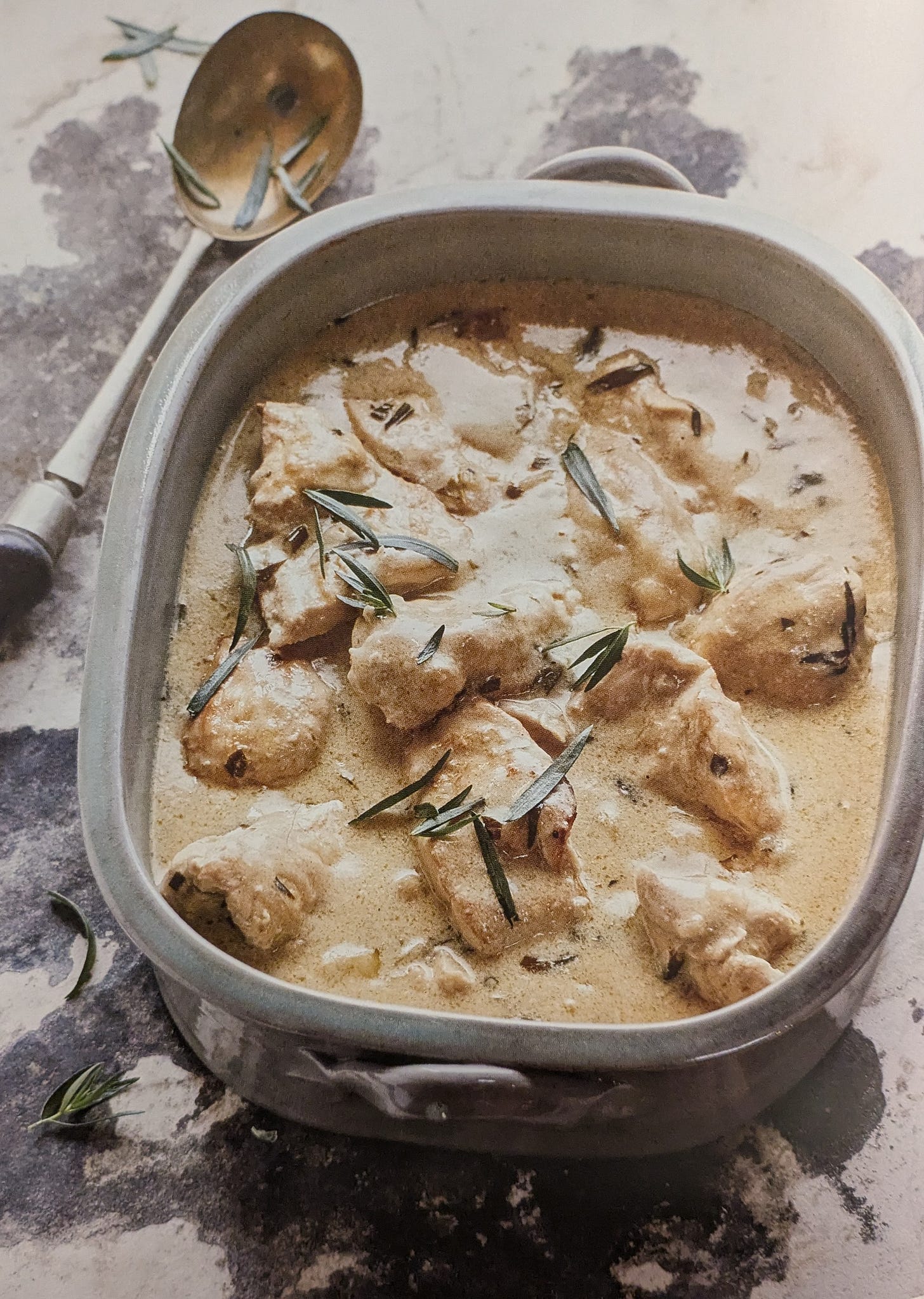
It’s not only the ‘tomayto’ pronunciation of ‘tomato’ that causes Brits to grind their teeth, just as ‘tomahto’ causes Americans to roll their eyes. An equal verbal confrontation is presented with ‘erbs’. Or herbs, as the English have it. (Why would American speech suddenly swerve towards France?)
And it goes deeper. Inside that ‘erb’ category there is the battle between ‘oraygano’ (US pron.) and ‘oregahno’, ‘bayzil’ and ‘bhasil’. Even more challenging for the British is ‘coriander’, which in the US is pronounced ‘cilantro’. The English version is rooted in koriandron, the Ancient Greeks’ word for ‘bed bug’, which is what they thought the herb smelled like. The Americans adopted their name from the Spanish for the herb ubiquitous in cooking south of the border down Mexico way.
You have to be careful with names. Possibly my favourite herb is tarragon, at this time of year at any rate, when the new season’s herb begins to come in. It originates from an amalgamation of the French estragon with the Arabic tarkhum, thought to be related to drakon, the Greek word for ‘dragon’. That arises from the herb’s Latin name, Artemisia dracunculus, with dracunculus meaning ‘little dragon’.
Why, you wonder, am I bothering you with all this? Because in my two decades in Washington DC, I could never reliably cook the tarragon chicken dish I offer you this week, one of my most favourite spring and summer dishes, without growing my own fresh tarragon, or resorting to the rather dusty dried herb. The fresh tarragon most commonly on sale in supermarket chains in Washington DC - so presumably across the United States - is THE WRONG TARRAGON and not worth buying.
It is Russian, not French.
With the Russian version of their full-scale invasion of Ukraine being described by their propaganda as ‘a special military operation’, it should not surprise you to learn that their duplicity slithers down even to erbs. Or herbs. They have corrupted tarragon. Artemisia dranculoides Pursch, commonly known as Russian tarragon, is the variety most generally stocked in US supermarkets. It is flavourless. And once introduced to heat in cooking, any hint it may possibly have harboured disappears completely.
French tarragon - Artemisia dracunculus sativa - is a lightly tongue-numbing aniseed-flavoured leaf and the only tarragon to buy for cooking. But if you can’t, it’s not hard to grow, in the ground or in a flowerpot, and any good garden centre will sell the individual plants. Just make sure you buy the correct variety.
The French plant is propagated by root division. You cannot grow it from seed, unlike Russian tarragon. It may not surprise you to learn that Russian tarragon is a far more hardy and vigorous plant than the French variety, growing more than metre in height, actively flourishing in poor soils, and drought, and neglect, its roots invading widely. Yet it is of zero value. Is this symbolic, do you think?
Recognising the culinary value of herbs doesn’t seem to have occurred much before the 5th century, when the use of herbs in the kitchen was recorded in ‘De re coquinaria’, the Roman collection of recipes also known as Apicius. But it was Taillevent, chef to French King Charles VI, who, in 1330’s ‘Le Viandier’, wrote down the specific use of each. He particularly recommended herbs to disguise the taste and smell of putrid meat. In the late 18th century, influential French chef Marie Antoine Carême added to their possibilities, promoting their use for decoration. A century later, Swiss chef Joseph Favre combined cooking with researching the healing properties of plants, to support his philosophy that ‘Nutrition is man’s best medicine’. Government food programmes take note, because Big Food Biz certainly won’t.
Herbs were originally used for healing or, in the case of ancient Egyptians, to embalm the dead, traces of them being found in sarcophagi. More than 800 different herbal remedies are listed on the early Egyptian Ebers Papyrus of 1550 BC. Lists of medicinal plants appear on Sumerian and Assyrian clay tablets. Medical systems based on herbs were established in China, Korea and India by 1000 BC. To improve the fighting strength of gladiators, the Romans fed them parsley, which we now know is packed with vitamin C. They introduced Mediterranean herbs to northern Europe, where they were cultivated in monastery gardens. If you’re ever in London and interested, pay a visit to the four acres of the Chelsea Physic Garden of the Worshipful Society of Apothecaries of London, home, since 1673, to over 4,500 medicinal and edible herbs and plants.

"Phs dish is consummately French, and handy for feeding both friends and people you want to impress because it's quick to make, you leave it alone to cook, then wait for it to seduce those around the table with its richness and scented flavour. It's also great for large parties because you can prepare it ahead right up to the final point of sticking it in the oven. If you can't get hold of a bunch of fresh French tarragon, buy a good brand of the dried herb. https://juliawatson.substack.com/p/french-ves-ruSsian-
Serves 4
2 tablespoons olive oil
2 tablespoons unsalted butter
4 skinless bone-in chicken thighs, or boneless, skinless breasts cut into 3 or 4 large chunks (frankly, I just go for the thighs as they have way more flavour)
1 bunch fresh French tarragon, leaves stripped from a third and reserved
1 large shallot peeled, finely chopped
150 ml/5 fl oz chicken stock
1½ tablespoons sherry vinegar
60 ml/2 fl oz Cognac
1 tablespoon Dijon mustard
240 ml/8 fl oz crème fraîche or heavy cream
salt and white pepper to taste (I prefer not to see black flecks in this)
Preheat oven to 180C/350F.
In a large frying pan, melt 1 tablespoon of the olive oil with the butter over medium-high heat and quickly brown the chicken, in batches if necessary, till it’s light gold in places. Remove to a baking dish, and tuck the whole tarragon sprigs in around the pieces.
Add the remaining olive oil to the pan and sauté the shallot over medium heat until transparent. Add the chicken stock, scraping up the fudge, then the sherry vinegar and Cognac. Lower the heat and simmer for 4-5 minutes. Stir in the mustard and crème fraîche. Season to taste. Pour this sauce over the chicken, cover the baking dish with foil, and bake for 30 minutes.
Stir in the reserved tarragon leaves then serve with puréed potato or rice, some buttered spinach or haricot beans, or a green salad.





Can't wait to try this recipe! Since I'm in the midst of planning which herbs to grow this year the information on French tarragon is much appreciated. Wonderful article and recipe.
I never knew all that about herbs. Fascinating!